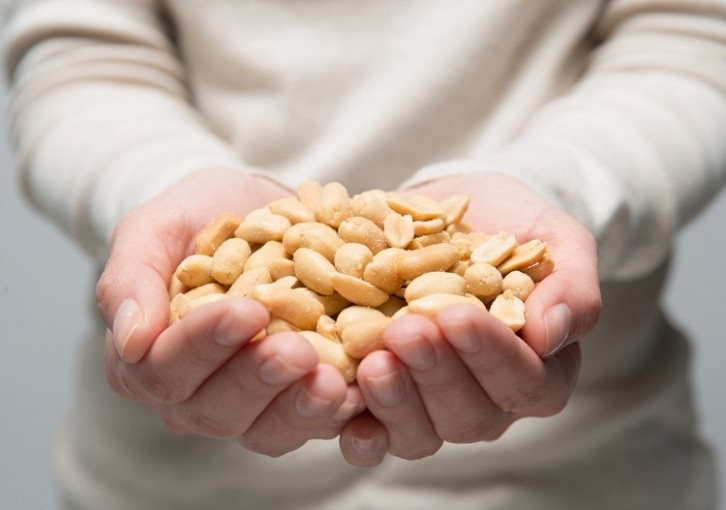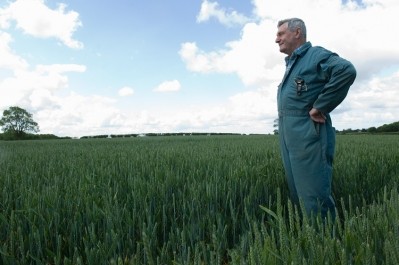Peanut shortage: What caused it and is it set to last?

From peanut butter to the topping for a Pad Thai, peanuts are a favourite ingredient for many consumers. In fact, according to market intelligence firm, ReportLinker, 48 million metric tonnes of peanuts are consumed globally every year. And that figure is expected to rise to nearly 49 million metric tonnes by 2026. Furthermore, data insight firm, Mordor Intelligence, has valued the global peanut market at an estimated 90.42 billion USD.
However, despite increasing consumer demand, production of peanuts has declined in some primary growing regions in recent years.
So, what is the reason for this and will this decline continue?
Why is there a shortage of peanuts?
The first and perhaps most influential reason for the shortage of peanuts is changing weather patterns and extreme weather events in the growing regions which supply the EU.
“Most of the peanuts supplied to the EU come from Argentina,” Aidan Wright, senior commodity analyst & methodology lead at market analyst firm Mintec Limited told FoodNavigator.
However, Argentina was affected by drought during the 2022/23 growing season, with environmental analyst firm, Gro Intelligence calling it, “one of the worst droughts in the past two decades".
This put significant pressure on farmers who produced lower yields than normal.
“The Argentinian Peanut Chamber (CAM) released its final supply and demand estimates for the 2022/23 season on 13 July [2023]. The organisation pegged the 2022/23 peanut crop at 658 thousand tonnes, down 35% (-356 thousand tonnes) from the season prior and 29 thousand tonnes below its previous estimate released at the International Peanut Forum in April 2023,” explains Wright.
In fact, at the end of the last season (2022/23), Argentina suppliers had no stocks left, which is extremely unusual, particularly when you compare it to the 49,051 metric tonne excess the previous season (2021/22).
“Typically suppliers will have an excess at the end of each season,” adds Wright.
Another issue affecting the peanut supply in Argentina has been the increase in land rents paid by farmers to landowners. During the last season, landowners became aware that they could earn more from farming other higher-value crops such as grains and oilseeds. As a result of this, they were charging the peanut farmers more for their land, aware that they could make more if they were to switch their land over to a higher-value crop. Peanut farmers were therefore renting less land and producing lower yields, due to the drought.
“Land rents went up due to increased crop prices across the board, which led to peanut suppliers cutting plantings significantly last season,” explains Wright.
Farmers have also been hit by an increase in production costs. Essentials such as fertilisers, fuel and electricity have all risen in recent years. As a result of this, some peanut farmers have chosen switch to growing alternative crops with potentially higher returns. This has placed further pressure on peanut supplies.
How is the peanut shortage affecting food manufacturers?
While consumers may not be aware of the shortage, manufacturers have been working to mitigate any supply issues.
“EU countries looked to other supplier nations such as Brazil and the United States, to make up for the shortfall in supply. However, there wasn’t enough high quality stock from other origins to offset the production drop from Argentina,” says Wright. “Manufacturers were also careful to manage their stocks so there wasn’t a shortage on the shelves.”
Prices have also risen as demand for peanuts remains high.
“Poor harvests and the economic situation in Argentina have driven up the cost of peanuts, which we’ve had to prepare for as a business,” Nicola Turner, brand controller of Ecotone UK-owned peanut butter brand Whole Earth told FoodNavigator. “It’s important to us that our supply levels are not disrupted.
“So far this year, we haven’t been adversely affected by the peanut shortages as we always secure volumes ahead of the crop in order to maintain supply. Prices are going up and we are always looking at potential efficiencies across our entire organisation to offset any increases.”
How is the peanut shortage affecting consumers?
Careful supply management by manufacturers has meant that retailers are not struggling to source supplies.
“We are not seeing any issues which are impacting our supply,” Louise Dean, partner & senior communications officer of John Lewis Partnership, owner of supermarket retailer Waitrose, told FoodNavigator.
Future supplies of peanuts
The good news is that weather conditions in Argentina for the current peanut growing season have been good and supply is expected to be back on track for the coming year.
“Looking at projections from the Cámara Argentina del Mani (CAM), the Argentinian peanut chamber, we can still see ending stocks at zero, but production itself is expected to increase significantly. And they’re expecting around 170,000 tonnes more in exports,” explains Mintec's Wright. “It’s still going to be tight, as there aren’t ending stocks remaining from last year, but we’ve seen an increase in plantings, up around 30,000 hectares, and an increase in yields.”
However, a potential issue facing peanut farmers and manufacturers is the fact that the newly elected Argentinian government was proposing a 15% export tax on peanuts. This proposal has not yet been ratified and may not come to fruition, but it is something for Argentinian farmers and European food manufacturers to be mindful of going forward.
It’s also important to acknowledge that with the increase in extreme weather events, we may again see the peanut supplies interrupted by drought.
“There have increasingly been some unusual weather patterns impacting yields over the past few years, making it harder to predict. As a business, we are well equipped to deal with these challenges,” explains Ecotone UK’s Turner. “We have long-term relationships with our suppliers who work closely with us to ensure we secure the volumes we need. To keep ourselves on the front foot, we have also reviewed other origins, but we have high standards for quality and taste.”
Are peanuts sustainable?
According to the National Peanut Board, “peanuts are a naturally sustainable crop and one of nature’s original ‘zero-waste’ plants.” This means that every part of the plant and legume, including the shell, is utilised during the planting, growing, harvesting and production process.
Peanuts are also water efficient, using approximately 3.2 gallons of water to produce one ounce of peanuts. This is in comparison to the approximately 28.7 gallons of water used to produce one ounce of almonds.
As with all legumes, peanuts are known as nitrogen fixers. This means they naturally replenish the soil with nitrogen leaving the farmer less requirement to use chemical fertilisers.



























